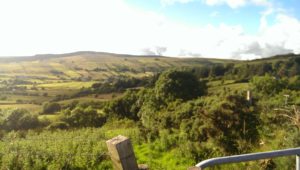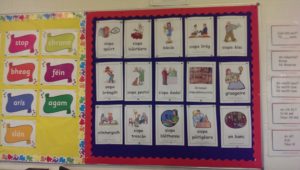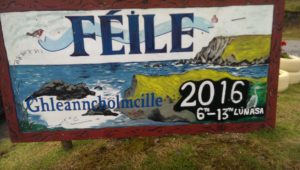1. I noticed over my month in Donegal that confidence in language acquisition comes and goes in waves. Although my competency in Irish was growing constantly, and some days I surprised myself by having conversations in Irish in which I could say everything I wanted to, there were other days in which I felt I could say nothing at all. As a result, I’ve come to think of persistence as the key to language acquisition. Every piece of extra time and effort I put in was rewarded, although not always right after I made the effort.
To a certain extent I did meet the goals I laid out for myself at the beginning of the summer. I am able to converse in Irish, with a limited but expanding vocabulary. When I listen to Irish language radio or watch Irish language television, I am normally able to understand what is being discussed. I can and do read in Irish, albeit slowly. What makes the goals I laid out for this summer significant, though, is that in order to preserve the progress that I made in them, I have to continue speaking, reading, writing, and listening in Irish. Now that the summer is over, what I did is less important in my language acquisition process than what I will continue to do.
2. My summer in Gleann Cholm Cille and Gleann Fhinne was as much a cultural learning experience as it was a language learning experience. I am currently studying abroad in Dublin, so I’ve had a chance to compare the relatively small rural communities where I lived in Donegal to the large international city I live in now. If I hadn’t gone to Oideas Gael, I wouldn’t have been able to compare the two communities. In addition, instructors and other students in Donegal gave me a lot of information about how to take advantage of Irish language learning resources in Dublin.
If I could give future SLA awardees advice, I would recommend that when they research programs, they consider the cultural lessons each program will teach them as well as its language learning resources. In my case, choosing to study in a small community that I might never otherwise have visited allowed me to learn about Irish culture in a deeper way than I otherwise would have.
3. I feel very fortunate to have gone from my time studying in Donegal directly to my semester abroad in Dublin because of the continuity it allows in my study of the Irish language. Because of the improvement I made over the summer in Donegal, I was able to enroll in an Irish class at University College Dublin where I’ll be reading a novel and working on my grammar and conversational skills. My hope is that my time in Donegal will be a springboard from which I can go forward to engage deeply in Irish language and culture for the rest of my time in college and beyond.



